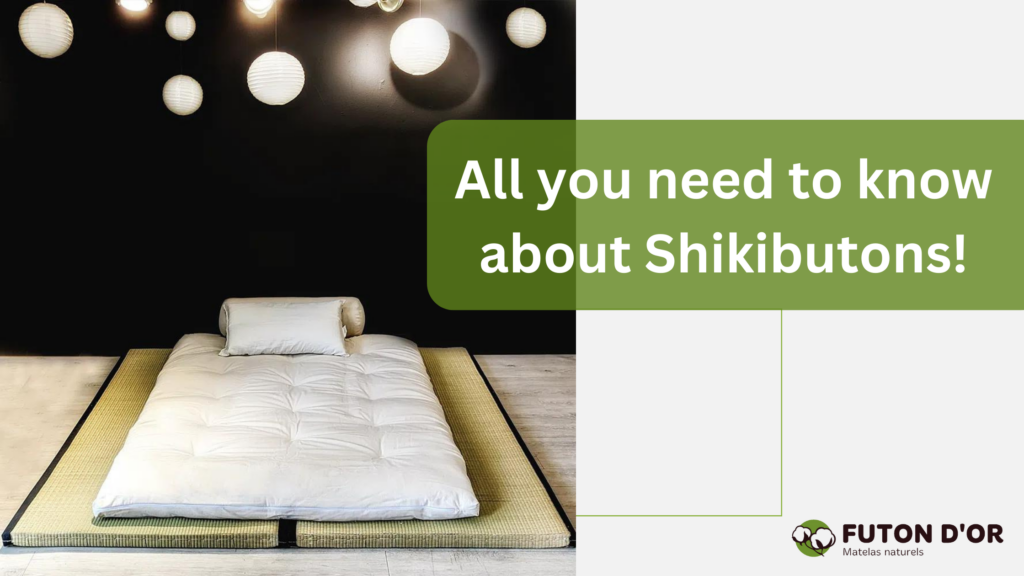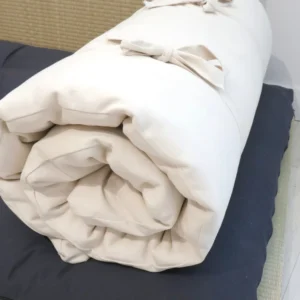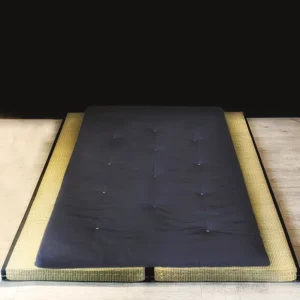All you need to know about Shikibutons

Shikibutons, or Japanese futons, are thin, versatile mattresses designed to be placed on tatamis on the floor. Traditionally stored away during the day to free up space and allow proper aeration, they can also be left permanently on tatamis, making them perfect for both occasional and everyday beds!
Different Versions of the Shikibuton
Shikibutons are commonly filled with cotton, but variations exist among manufacturers. At Futon d’or, we offer three different versions, made with natural, healthy, and chemical-free materials.
Cotton Shikibuton:
Consisting of four layers of cotton, this traditional version offers very firm comfort. Cotton is a natural, breathable fiber, providing good body moisture regulation.
Eucalyptus Shikibuton
Composed of two layers of eucalyptus fibers and two layers of cotton, this popular version is similar in comfort to the cotton one but offers better absorbency and coolness. Eucalyptus is more eco-friendly, requiring less water to grow, and has anti-mite and fire-retardant properties.
Latex Deluxe Shikibuton
Designed for those who want a firm futon with some support and padding. This version includes a 2-inch layer of plush latex and two layers of eucalyptus fibers. Latex is a dense natural foam, ensuring the futon takes longer to compress compared to fiber versions.
Setting Up Your Shikibuton Space
Since shikibutons are made of natural materials, they are sensitive to humidity. For permanent setups, it’s important to place them on a surface that allows good air circulation. Tatamis, made of 100% woven rice straw, provide an ideal breathable base with a canvas underneath to prevent ground moisture.
For occasional use with regular storage, the risk of moisture accumulation is reduced, making tatamis optional.
Maintenance Tips
We recommend rotating the futon monthly for even compression and aeration. Exposing it to sunlight when possible helps kill microbes and mites, keeping the futon healthy. Shikibutons should not be washed; protect them with specially designed shikibuton covers that are easy to attach and store.
To shop Shikibutons, visit our website!


